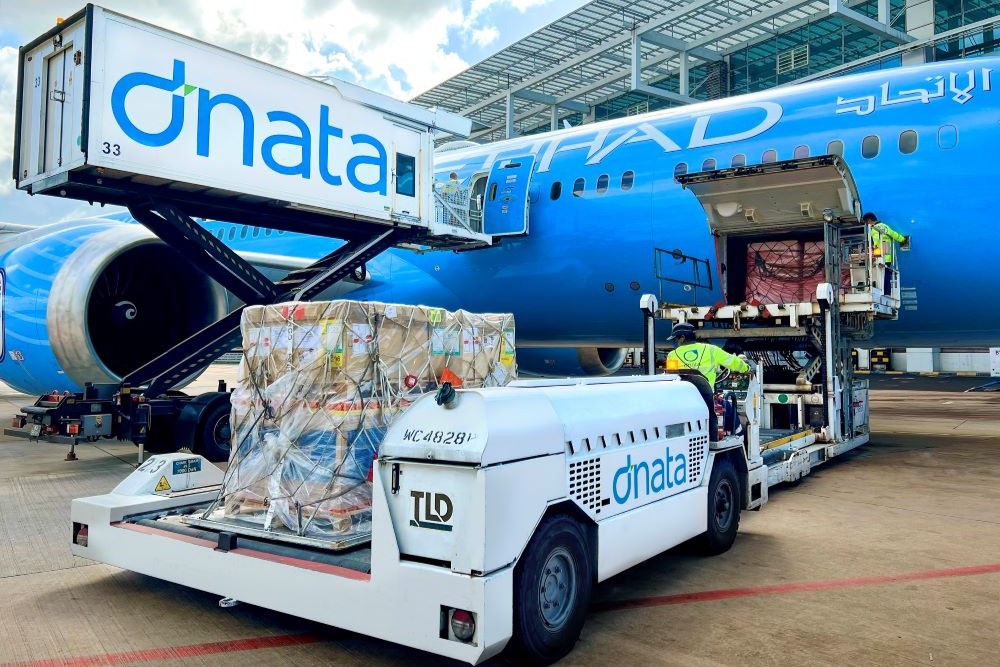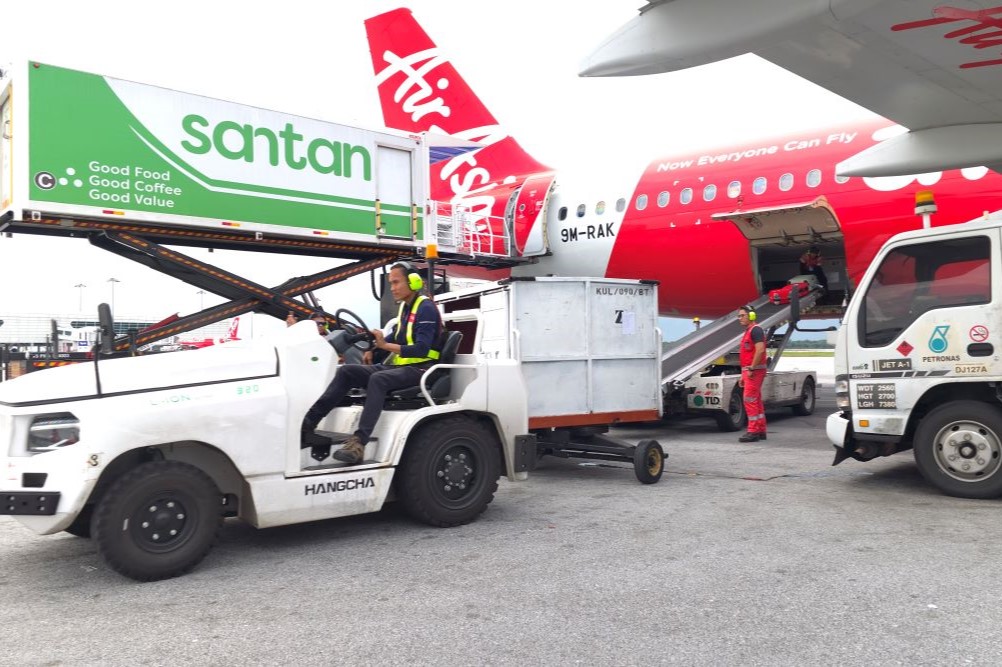
Picture credit: Hong Kong Air Cargo Terminals (Hactl)
Airlines in Asia Pacific are benefiting from strong travel demand with the Association of Asia Pacific Airlines (AAPA) reporting that airlines carried 365 million passengers in 2024, 30.5% higher than 2023.
Demand measured in passenger revenue kilometres (RPK) increased 28% and available seat capacity was up 26%, raising the passenger load factor by 0.9 percentage points to 81.6%.
In the cargo market, freight tonne kilometres (RTK) rebounded with a 14.9% increase, slightly higher than the 14.6% growth in capacity. The international freight load factor increased by 0.2 percentage points to 61%.
Commenting on the results, Subhas Menon, Director General of AAPA, said: “The post-pandemic recovery on North East Asia routes, helped by the relaxation of visa policies, together with overall healthy demand across the region, drove growth in both leisure and business travel markets.”
Looking at the cargo figures, he said that despite weakness in the global manufacturing sector, Asia Pacific’s air cargo grew due to e-commerce sales and the region’s role as a manufacturing hub.
It also benefited from maritime shipping disruption causing a modal shift.
The outlook for 2025 is moderated growth with Menon advising that airlines face challenges including rising labour, maintenance and aircraft leasing costs, along with pressured caused by delayed aircraft deliveries.
He said: “To navigate these challenges, airlines are focusing on active cost management and seeking the commitment of equipment suppliers to address supply chain problems, while continuing to invest in growth opportunities.”
The world’s cargo hub
Hong Kong International Airport (HKIA) retains its position as the world’s busiest cargo airport and the three-runway system will provide capacity for future growth.
Wilson Kwong, Chief Executive of Hong Kong Air Cargo Terminals (Hactl) reports that there has been strong growth in all areas of the business.
He said: “The universal e-commerce boom was also evident for us, particularly in the last quarter, when front-loading of stocks took place to mitigate the potential consequences of the US clampdown on e-commerce from China.”
Hactl welcomed new airlines including Starlux Airlines, opened new facilities for products such as temperature-controlled cargo and a dedicated area for dangerous goods.
Efficiency was improved with the Terminal Services Centre – Exports, which speeds up customer processing and optimise staff resources, and 12 automated service kiosks were introduced to provide an alternative to counter queuing for import release.
2024 benefited from the modal shift from sea to airfreight, which may or may not continue in 2025. Kwong expects growth in 2025 at a lower pace than last year.
He said: “Despite the anticipated US clampdown on e-commerce imports, overall growth should remain strong, but there may be some re-balancing across major markets and routes. As Hactl handles carriers serving the world, we are largely insulated from the fortunes of individual markets.”
Hactl invests heavily in innovation and has been trialling Autonomous Electric Tractors (AETs) to tow pallet dolly trains on the ramp.
Kwong reports that the early results are promising though there is more work to do, such as automating coupling and de-coupling dollies with different hitch heights.
The next steps are to use the technology for equipment like loaders and forklifts.
Kwong said: “This is not about replacing human workers, but about dealing with the mounting challenge of recruitment for less popular jobs. We need to do more with less.”
Asia Pacific is home to established and emerging manufacturing economies, and rising wages increase the consumer class, which increases demand for two-way traffic.
Looking at Hong Kong, Kwong said: “For Hong Kong and Hactl, our strategic central position, unparalleled air services and maindeck capacity, modern Customs regime and well-educated, bilingual workforce, mean we have an attractive proposition for carriers.”

Showing resilience
2024 was a good year for dnata Singapore for both passenger and cargo services, said Sam Gould, Head of Cargo Services, Singapore.
Passenger traffic at Changi International Airport has continued its post-pandemic recovery and cargo growth has stayed strong while moderating from the pandemic’s peak years.
Singapore has benefited from strong regional trade flows and increased demand for specialised handling services, particularly for perishables and pharmaceuticals.
E-commerce has been another growth area, with Gould saying, “E-commerce flows are rapidly increasing in volume, however in a business that relies on tonnage, this is not always beneficial to a terminal if we stick to traditional revenue models and services.”
There have been challenges along the way with ongoing labour shortages, rising operational costs and evolving customer expectations.
He said: “Ground services had to adapt to new requirements for enhanced passenger experiences, particularly with the growing trend toward digitalisation and contactless solutions.”
Cargo services had to navigate shifts in global supply chains and provide seamless services for high-value and time-sensitive goods while meeting customer expectations for transparency, data availability and real-time information.
dnata Singapore has invested in technology, improved workforce training and enhanced collaboration with its airline and freight forwarding partners.
One recent initiative dnata Singapore has implemented to increase visibility for clients so they can receive real-time updates about their shipments on their devices from anywhere in the world.
Acceptance processes have also been digitalised.
The developments set up dnata Singapore for plans to digitalise processes further in 2025 into the terminal including storage and retrieval and the build-up process.
Gould said: “The end target is to have a system that can advise us on what process needs to be completed next, and how to do that instead of how we (and all cargo terminals) currently operate which is, perform a function and update a system.”
He is optimistic about this year despite economic uncertainties and geopolitical factors.
Sustainability is increasingly important and dnata is accelerating its efforts by electrifying its ground handling fleet and optimising processes.
The dnata Group has the strategic goal of cutting carbon emissions by 50% by 2030.
Gould said: “Our cargo terminal relies on solar energy for 30% of our needs and has achieved a 95% electrification of handling equipment which includes forklifts, pallet jacks and slave pallet movers. I believe the strong foundation we’ve built over the past 12 months will position us well to adapt and thrive in the years ahead.”

Poised for further growth
Musdalifa Bin Abdullah, CEO of Ground Team Red says ramp and cargo services both experienced remarkable growth in 2024.
In 2024, Ground Team Red saw a 10% increase in flight handling operations, processing almost 160,000 flights while cargo volumes increased 53% to almost 132,000 tonnes.
Abdullah said: “This success was driven by our strategic focus on sustainability, operational excellence, and enhancing customer experience through tailoring to each customer’s needs.”
Ground Team Red handled over 6.7 million passengers throughout the year, expanded its customer portfolio with new airlines and supported the launch of 15 new routes with existing clients.
Sustainable growth was key for Ground Team Red, with Abdullah saying: “We successfully implemented Malaysia's largest deployment of electric baggage tractors, setting a precedent for sustainable aviation operations.”
For this year, Ground Team Red will consolidate current operations and explore targeted expansion opportunities such as actively pursuing cargo terminal projects across Malaysia.
Abdullah said: “Our customers can expect enhanced service offerings driven by technology and innovation, alongside potential new developments in cargo handling capabilities.”
Air cargo demand has been volatile, which requires agility and strategic planning to handle.
Abdullah said Ground Team Red has focused on maintaining a versatile workforce who can adjust to fluctuating volumes and investing in technology to streamline operations.
He said: “We also foster strong relationships with our airline partners to ensure we are aligned with their needs and can respond effectively to shifts in demand. This collaborative approach helps us navigate market fluctuations efficiently.”
The increasing demand for air travel and cargo services means aviation in Asia Pacific is poised for growth, said Abdullah, which brings expansion opportunities in the region for Ground Team Red.
The long-term business plan involves continued investments in sustainability and digitalisation, and enhancing operational capabilities to serve evolving customer needs.
Abdullah said: “We aim to be a leader in ground handling services in the Asia Pacific, known for our commitment to innovation and customer satisfaction.”
This article was published in the February 2025 issue of Ground Handling International, click here to read the digital edition and click here to subscribe.






